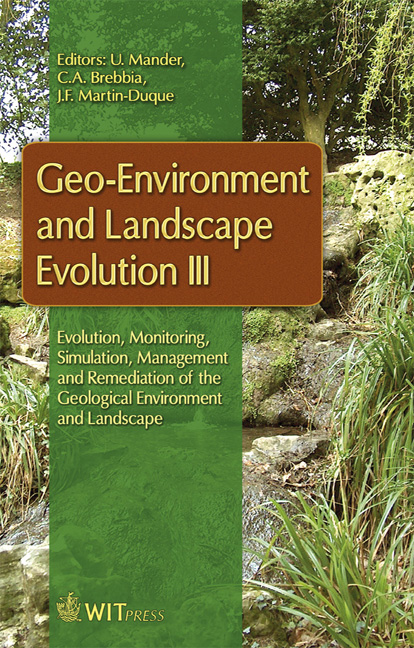The Problem Of Flow By-pass At Permeable Reactive Barriers
Price
Free (open access)
Transaction
Volume
100
Pages
10
Page Range
15 - 24
Published
2008
Size
1,255 kb
Paper DOI
10.2495/GEO080021
Copyright
WIT Press
Author(s)
H. Klammler & K. Hatfield
Abstract
Permeable Reactive Barriers (PRBs) are a passive in-situ technology, which is based on the interception and physical, chemical and/or biological remediation of a contaminant plume through installation of reactive material in an aquifer. An analytical approach in two dimensions has been introduced that allows for the determination of the flow fields and capture zones near PRBs of different types. The present work uses this approach to investigate the problem of flow by-pass, which is when a portion of flow both enters and leaves the PRB through the upgradient side of the reactor without crossing it. This occurs when a significant ambient flow component exists parallel to the PRB and may lead to contaminant flow divergence around the PRB. Maximum permissible deviations of the ambient groundwater flow direction are defined for a range of PRB types in order to avoid by-pass. Results show for rectangular continuous wall reactors, deviations in the design ambient groundwater flow direction become even more important as the reactor becomes more elongated perpendicular to that direction. This undermines the typical engineering assumption that a PRB longer than the transverse width of the plume is sufficient for plume intercept and treatment. The addition of perpendicular funnel arms or velocity equalization walls at the reactor acts favorably against flow by-pass. For drain and gate PRBs, susceptibility to flow by-pass may be reduced by increasing the separation of collector and distribution drains. An increase in the hydraulic resistance of the reactor increases the possibility of flow by-pass. Keywords: groundwater, contamination, plume, remediation, capture zone, conformal mapping.
Keywords
groundwater, contamination, plume, remediation, capture zone, conformal mapping.





